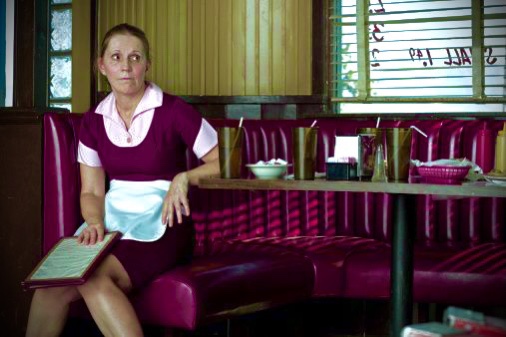The millions of us who’ve lost restaurant jobs because of the pandemic are feeling unloved. With Valentine’s Day approaching, any amorous thoughts we have about rekindling with our ex-employers are tempered by the heartache of having been dumped by an industry that never truly loved us. The more time we’ve invested in this tumultuous yet committed relationship—in my case, twenty long years—the more the break up stings.
First you think to yourself, I should’ve seen it coming. But how could you have known? You were too busy working all the time—we all were—religiously prioritizing the needs of the restaurant above our own. Now you feel confused. Lost. You blame yourself. As time passes, you start to feel cheated.
You remind yourself that you don’t really miss restaurants, you just miss the “idea” of them. Your friends tell you it’s time to start seeing other industries. You deserve better, they tell you. But it still hurts that restaurants could so easily dispose of you when it seemed like what you had meant something.
You promise yourself you won’t get back together after everything that’s happened, but you know you’re not strong enough to resist their worldly charms. The flexible schedule. The adrenaline of the dinner rush. The money. You know the restaurant industry will welcome you with a warm embrace, like you’re the only person who does your job so well. But within days you feel like a piece of meat again. No matter how hard you try to make it work with restaurants, they’ll never respect you.
The sense of abandonment many of us feel is a sobering reminder of how little value our deep knowledge of the culinary arts has when we have nowhere to display it. It’s like being a pastor without a church or a congregation to bear witness. We’ve dedicated our adult lives to facilitating joy for others, delivering multitudes of hedonistic pleasures to complete strangers. In our time of need, shouldn’t it be our turn to be on the receiving end of the generosity?

Charles Prusik, a veteran of the restaurant industry in New York City, considered this question in an essay he published recently on Medium. In it, he questions whether true hospitality can exist in a world where accommodation is increasingly transactional. He writes:
“Here, I think, is the lie, the myth, at the heart of any restaurant that is the source of so much tension and strain between us restaurant employees and you, our guests: that when you visit our restaurant, you should expect the very same treatment as if we were welcoming you into our home. It’s a myth we’ve been perpetuating, perhaps with good intentions, but where it’s gotten us is an increasingly untenable position. Sure, some of us put in so many hours that it does seem like we live at the restaurant, but it is in every meaningful way clearly NOT our home. It’s our job. And while you are our guests, the transaction, the exchange, the social compact that we have entered into is something entirely different. Since you are not visiting us at our home, you cannot in any way return the favor.”
In most capitalist societies, it’s not unusual for people to be treated like they’re worthless at work. But in restaurants, daily reminders of your expendability have become accepted as the norm. Entitled guests, insolent chefs, and petulant managers often derive sadistic joy from belittling hourly workers. A restaurant paycheck, no matter how ample, rarely provides the necessary salve for injured egos.
But to be waylaid in the midst of a global pandemic? It’s the ultimate dispersion. For some, it’s a reality check. Sometimes you can’t see the writing on the wall until you run right into it. The disruption caused by the pandemic may portend a more widespread reckoning, a pivotal moment in the viability of hospitality work as a legitimate career. The restaurant industry seems underprepared for the inevitable depletion of its human resources.
In his essay, Prusik tries to get at the heart of why the industry’s collapse will be so difficult to repair. Behind the walls of our restaurants, he writes, we describe the way a restaurant functions using mechanical terms that connote manufacturing, but, in reality, the organism is more anthropomorphic.
“We say things like “The kitchen was firing on all cylinders,” “Thanks for pumping out those drinks for me,” or “Man, we’re really crushing it this week and it’s not even Thursday.” The trouble with that analogy lies in this — when machines break down, everything grinds to a halt until you fix the problem — change the stripped gear, clean the oil filter, add more gas. Restaurants don’t have that luxury. They’re less like machines and more like the human body—an endlessly complex and incredible feat of engineering that begins to break down from the moment it is created.”
Prusik reminds us that the public has taken the restaurant industry for granted for too long. We’re all complicit in this failure. He punctuates this assertion with a simple but apt analogy:
“The last twenty years were the equivalent of a twelve course chef’s tasting menu with pairings and a trip to the wine cellar for brandy and cigars after dessert, and you just stiffed us on the bill.”
The restaurant economy was stagnating before the pandemic. COVID-19 put it on a ventilator. Many prognosticators expect that pent up demand will slingshot the business forward into a “Roaring Twenties” scenario akin to the euphoric aftermath of the Spanish Flu epidemic in 1918. But this ignores some of the basic realities that today’s restaurants face when it comes to growth.

It’s impossible for restaurants to multiply last year’s sales unless they can find a way to multiply the amount of chairs and tables in their dining room. Restaurant space is finite (and oppressively expensive), which means that growth can only come from volume—faster service, tighter reservation intervals, and operational efficiency. Perfunctory service isn’t just about profitability, it’s become integral to our ability to survive.
Restaurants that manage to survive will be forced to implement austerity measures that are likely to take a severe toll on the staff. The lowest paid positions will be expected to make the biggest sacrifices. If any staff members dare to complain, they’ll be reminded how lucky they are to have their jobs back.
For those who’ve spent years working in restaurants, it’s getting harder to hide the bruises. How can we love working in an industry that doesn’t love us back? The endless cycle of bad restaurant relationships erodes our self-worth. But victims of abuse can also reach a breaking point where they realize it isn’t worth the suffering. They find the inner strength to move on.
This is the precipice many restaurants workers are arriving at now. We’ve known all along that restaurants never really loved us for our minds, they only lusted for our bodies. But the sex was never really that good, administering hospitality just one giant fake orgasm after another. So as the restaurant industry digs itself out of the rubble and reaches out to former staff to “patch things up,” it may find that more than a few of its former lovers won’t be returning the phone calls anytime soon.




